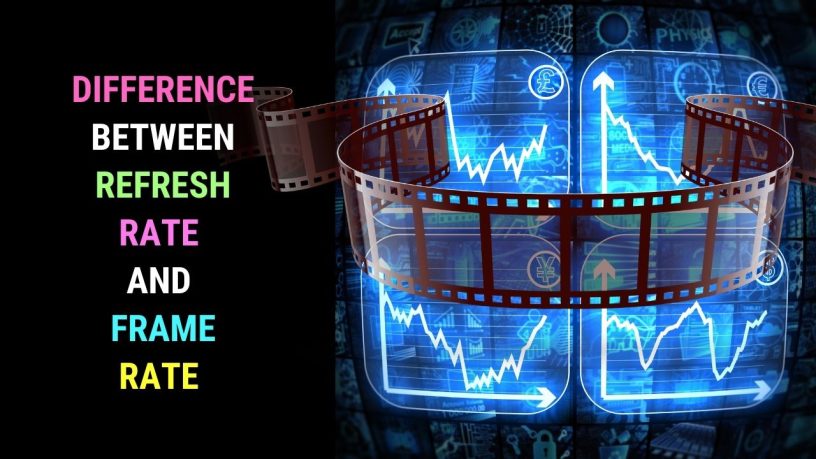Last updated on January 23rd, 2024 at 02:18 am
When out shopping for an HDTV or computer monitor you would have come across the terms video refresh rate and video frame rate.
What are they and how do they work?
What is Video Refresh Rate
Refresh rate is the number of times an image is reprojected or ‘newly drawn’ on a TV screen every second.
The more the number of times an image is ‘updated’ per second, the smoother the image display will be.
Among others, a high video refresh rate reduces screen flicker.
How is Refresh Rate Measured?
Video refresh rate is measured in hertz (Hz).
If a television or computer monitor screen is capable of a 60Hz refresh rate, you’ll see images updated 60 times each second.
Of course, the updating process happens so fast that it will not be visible to the naked eye.
Incidentally, the human eye can process a refresh rate of up to 500Hz. Which means 500 image updates per second.
Response Time
As explained above, refresh rate is how often and fast image pixels are updated or redrawn.
Response time is the time taken for a pixel to change from one color to another.
In other words, it is the time taken for a single refresh to occur.
It would be 1 divided by the refresh rate. The measurement is in milliseconds (ms).
A 60Hz refresh rate takes 16.6ms, (1/60) a 90Hz, 11.1ms, and 8.3ms if the refresh rate is 120Hz.
The higher the video refresh rate, the lower the refresh time is.
Benefits of a High Video Refresh Rate
A high video refresh rate is useful in gaming. It reduces visual latency. The result is you enjoy smoother videos.
Disadvantages of a High Refresh Rate
You may not see the disadvantages of a high refresh rate with the latest TVs or computer monitors.
However, it’s a different scenario with battery-operated devices like smartphones.
Smartphone Refresh Rate
A high refresh rate in a smartphone consumes processor and battery power.
Users have complained about their devices heating up when a high refresh rate is used.
Variable Refresh Rate
However, there’s an option to disable a high refresh rate or set it to adaptive mode. Adaptive refresh rate is also known as variable refresh rate (VRR).
Adaptive mode allows the smartphone to vary the refresh rate according to the type of content it displays.
In this way, battery usage is reduced.
Refresh rates can drop from 120Hz to 10Hz through the use of the adaptive mode.
For example, a low video refresh rate is used when you’re reading an ebook and a higher refresh rate for gameplay.
Do You Need to Worry About TV Refresh Rate?
While video refresh rates are a concern when it comes to smartphone usage and computer gaming, the same can’t be said for TVs.
TVs come with refresh rates of between 60Hz to 120Hz.
Even with a 60Hz TV refresh rate, you can view decent video.
But if you’re using your TV then it would be a different story. More often than not, you would need a 4K TV with a refresh rate of 120Hz with support for a variable refresh rate.
Video Frame Rate
As you would have already known, video footage consists of a series of still frames. Frame rate is the number of frames displayed each second.
The higher the number of frames, the smoother the movement of a video.
On a computer, the CPU (central processing unit) and the GPU (graphic processing unit) determine the supported video frame rate.
Thus video with 60fps would require a powerful CPU and GPU.
Learn more about video frame rates.
Video Frame Rate and Refresh Rate Work Together
Video frame rate and video refresh rate work together to produce the expected video quality.
This would mean video without lag, stutter, and tearing.
If your video frame rate is higher than your monitor refresh rate, then tearing can occur.



